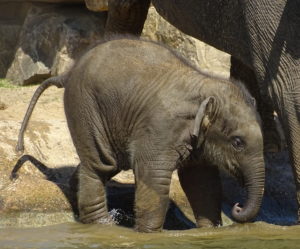
“We are expanding the toolkit available for conservation,” says Bridget Baumgartner, Director of Research and Development at Revive & Restore. “We’re a technology-focused organization with a network of technology experts – we’re here to help make researchers in this space as successful as possible.”
Bridget manages the Catalyst Science Fund for the non-profit Revive & Restore. This program has awarded more than 70 grants to researchers applying biotechnology tools in a unique way to support genetic rescue of endangered or extinct species. The fund was launched in 2018 with a $3 million pledge from Promega, and this year celebrated its fifth anniversary. In that time, projects supported by the Catalyst Science Fund have cloned a black footed ferret, developed methods for analyzing population genetics of isolated elephant herds, and much more.
“The donation from Promega enabled us to demonstrate that this long-term ‘Go Big or Go Home’ approach can create new capabilities that are going to be high-impact for wildlife conservation,” Bridget says.
Continue reading “Coral, Ferrets and a Lot of Elephant Poop: 5 Years of the Revive & Restore Catalyst Science Fund”
